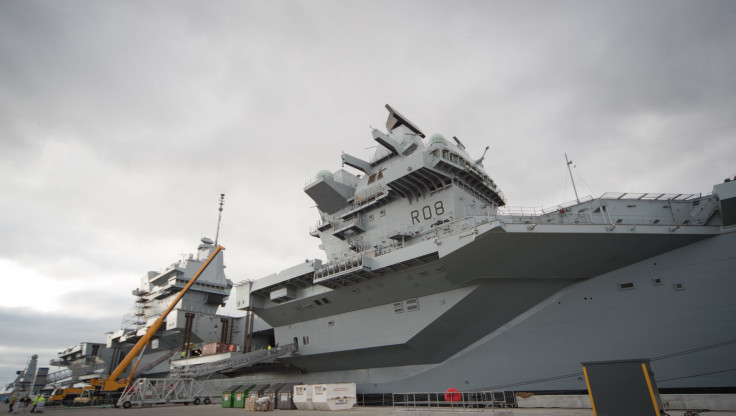Leak In HMS Queen Elizabeth, UK's New Aircraft Carrier Worth $4.13 Billion

A leak was found on the U.K.'s new aircraft carrier HMS Queen Elizabeth, barely a month after it was commissioned by the Queen.
The $4.13 billion warship is supposed to be the biggest and most powerful ever built by the U.K.
According to a British Royal Navy spokesman, the 919-feet long warship is leaking because of a defect with its stern seal. The seal is an inflatable rubber ring that fits around one of the propeller shafts.
The problem was detected during sea trials and it was found that the ship was taking on up to 200 litres of sea water per hour.
According to a report in the News Talk, the spokesperson said, “An issue with a shaft seal has been identified during HMS Queen Elizabeth’s sea trials; this is scheduled for repair while she is alongside at Portsmouth.”
He added, “It does not prevent her from sailing again and her sea trials programme will not be affected.”
A huge thank you to all of you who supported the ship's company and contractors of HMS Queen Elizabeth today. Welcome home, @HMSQnlz. pic.twitter.com/juW64KfKsq
— Royal Navy (@RoyalNavy) August 16, 2017
Nearly 10,000 people were engaged in the construction of the 65,000-ton vessel, which can remain operational for half a century. It can travel in an excess speed of 25 knots.
According to the Daily Mail, talking about the cost that would be incurred to repair the warship, British Defence Secretary Gavin Williamson told the Press Association that the contractors who built the ship would pay for repairing the carrier.
He said, “This isn’t going to cost the British taxpayer a penny.”
Williamson further said, “This is the reason why we have the sea trials, to make sure that everything is working absolutely perfectly. This is something that work is currently ongoing to deal with and HMS Queen Elizabeth will be going out early on in the New Year to continue her sea trials and making sure she is fully operable in terms of helicopters and the F-35 being able to fly off her deck.”
He added, “HMS Queen Elizabeth is the most magnificent aircraft carrier in the world and, when she is fully operational and she is being deployed right around the world, she is going to make a significant difference as to what we can actually achieve and what we are able to do as a global power.”
The royal warship was constructed part by part, which were then transported to Rosyth in Fife where all the parts were assembled.
Many shipbuilding yards like Govan and Scotstoun in Glasgow, Cammell Laird in Liverpool, Appledore in Devon, and the A&P on the Tyne in Newcastle and Portsmouth worked hand in hand to build the carrier.
Admiral Chris Parry of the Royal Navy told Sky News that the leak was not a big deal and can be easily sorted out.
He said, “Every ship, to tell you the truth, takes on water that’s why you have pumps. What people have to realise is the whole reason for sea trials is that you race and rally the ship, you stress it right to its extremes, and you're really looking for faults like this to see what happens.”
© Copyright IBTimes 2024. All rights reserved.











